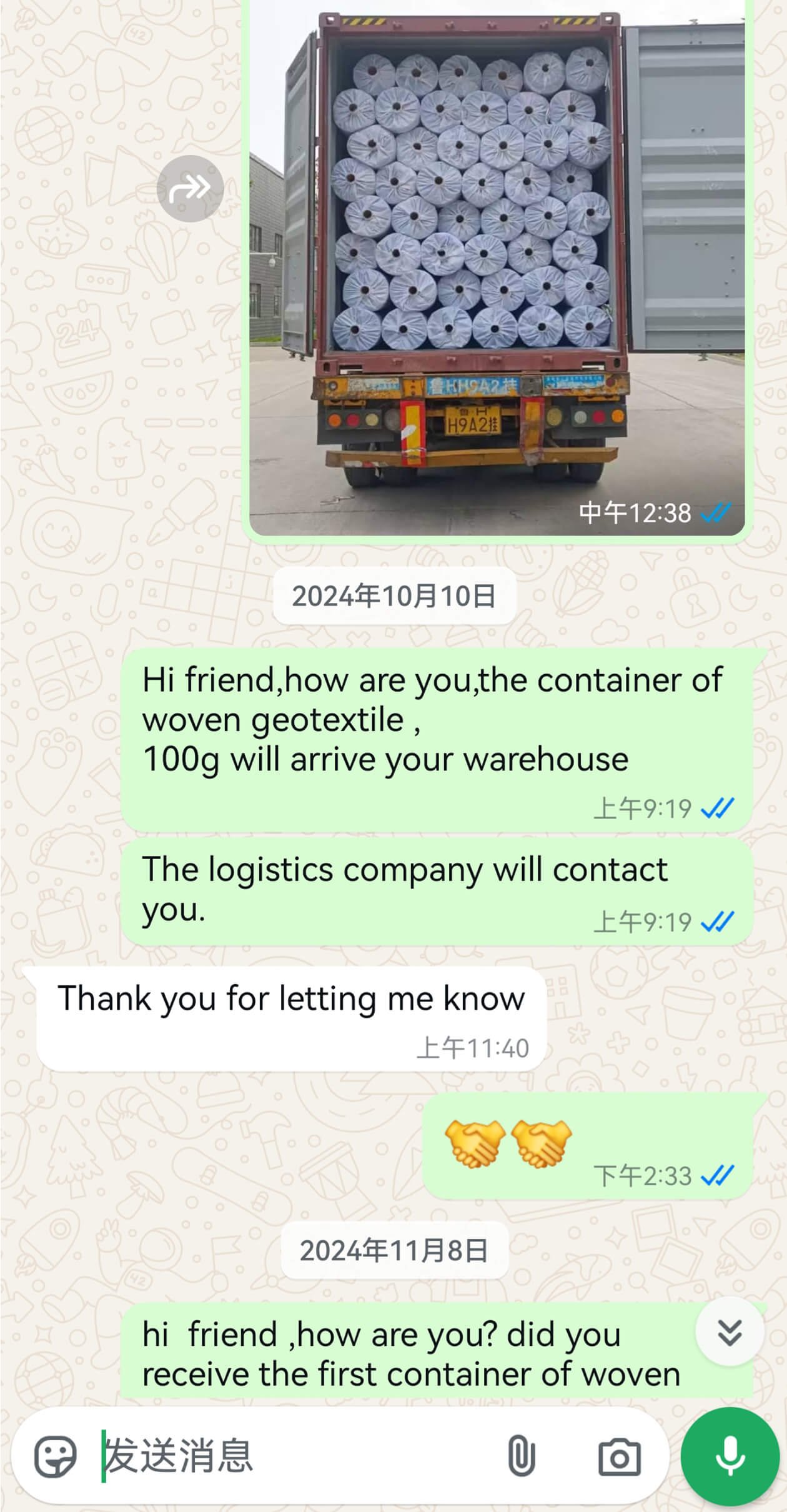Landscape Fabric (Polypropylene Staple Fiber Needle Punched Nonwoven Geotextile) is composed of polypropylene (PP) staple fibers, a thermoplastic polymer known for its exceptional chemical resistance and durability. The fibers are mechanically bonded to form a nonwoven structure, ensuring a uniform and porous matrix ideal for geotechnical functions.
Cost-Effectiveness: Lower production costs compared to polyester geotextiles.
Environmental Resilience: Outperforms natural fibers (e.g., jute) in moisture-rich or chemically aggressive settings.
Устойчивость: Recyclable and long-lasting, reducing environmental footprint.
Contact us for more.
Polypropylene staple fiber nonwoven geotextile is a critical solution for modern infrastructure challenges, combining performance, durability, and adaptability. Its engineering benefits make it indispensable in projects demanding reliable soil stabilization, дренаж, and environmental protection. https://lygeosolution.com/product/landscape-fabric/
High Tensile Strength and Elongation: Предел прочности (typically 8–50 kN/m) with flexibility, accommodating ground movements.
Superior Permeability: Facilitates efficient water flow while preventing soil erosion (filtration function).
Chemical and Biological Resistance: Inert to acids, alkalis, and microbial degradation, ensuring longevity in harsh environments.
UV Resistance: Stabilized variants offer enhanced protection against sunlight degradation.
Lightweight and Easy Installation: Low weight (e.g., 100–1000 g/m²) reduces transportation and labor costs.
Разделение: Prevents intermixing of soil layers in roads, железные дороги, and foundations.
Filtration and Drainage: Used in retaining walls, subsurface drains, and landfill leachate systems.
Erosion Control: Protects slopes and riverbanks when combined with vegetation or rock armor.
Cushioning: Shields geomembranes in containment projects from punctures.
For specific projects, parameters such as weight, tensile strength, and permeability can be customized to meet ASTM/ISO standards, ensuring optimal performance.
| Properties |
Test Method |
Единица | GXSF150 | GXSF200 | GXSF300 | GXSF400 | GXSF500 | GXSF600 | GXSF800 |
GXSF1000 |
| Предел прочности(MD/TD) |
АСТМ Д4595 |
kN/m | 8 | 11 | 20 | 24 | 28 | 34 | 48 |
50 |
| Tensile Elongation(MD/TD) |
АСТМ Д4595 |
% | 50 | 60 | 60 | 60 | 60 | 60 | 60 |
60 |
| Grab Tensile Strength(MD/TD) |
ASTM D4632 |
N | 520 | 700 | 1100 | 1500 | 1800 | 2200 | 2800 |
3000 |
| Grab Elongation(MD/TD) |
ASTM D4632 |
% | 50 | 50 | 60 | 60 | 60 | 60 | 60 |
60 |
| Trapezoidal Tear Strength(MD/TD) |
ASTM D4533 |
N | 220 | 330 | 400 | 480 | 560 | 620 | 860 |
880 |
| CBR Burst Strength |
ASTM D6241 |
N | 1700 | 2400 | 3200 | 4300 | 5300 | 6000 | 6800 |
7000 |
| Pore Size O90 |
ASTM D4751 |
µm | 90 | 85 | 80 | 75 | 70 | 60 | 55 |
50 |
| Water Flow Q100 |
ASTM D4491 |
L/m2/s | 160 | 145 | 140 | 120 | 105 | 95 | 90 |
80 |
| Weight |
ASTM D5261 |
g/m2 | 150 | 200 | 300 | 400 | 500 | 600 | 800 |
1000 |
| Roll Width | – |
м |
5.95 | 5.95 | 5.95 | 5.95 | 5.95 | 3.95 | 3.95 |
3.95 |
| Roll Length | – |
м |
250 | 150 | 100 | 100 | 75 | 50 | 50 |
50 |


As an experienced and professional supplier, our products have been exported to more than 50 countries and regions, such as the United States, Канада, Mexico and so on.
The products include PP biaxial geogrids, PE and PP uniaxial geogrids, polyester geogrids, fiberglass geogrids, basalt geogrids, geotextiles, geomembranes, geonets, safety fences, erosion control geogrids, and geosynthetic composite material products.


Geomaterial testing equipment is mainly used to test the physical, mechanical, hydraulic and durability properties of geosynthetics. Among them, geotextile testing equipment is used to test the permeability, cone resistance, surface opening size and thickness of geotextiles. The geomembrane test equipment is used to test geosynthetics thickness tester, direct shear/tensile test system, creep test system, и т. д.. There are also geosynthetic liner (GCL) test equipment, and geotextile/PVD test equipment.




Elevate your projects with our industry-leading geotextile solutions. Connect with us today and experience the difference of working with a truly professional geotextile supplier.






Geotechnical materials are various artificial synthetic materials used in civil engineering together with soil, rock or other materials. They mainly include geotextiles, geomembranes, geonets, geogrids, etc., which are used to prevent soil loss, strengthen soil structure, control water flow and other purposes.
Regular inspection for damage or aging. Make sure that the seams of geotextiles and membranes are not loose or broken.
Remove debris from the material to maintain its normal function.
The life of geotextiles is affected by many factors, including material type, environmental conditions and usage. Generally speaking, high-quality geotextiles can be used for 10 to 50 years, or even longer, but they need regular inspection and maintenance.
Most geotextiles are environmentally friendly because they can be recycled or reused. Some materials, such as geomembranes, may require special treatment after long-term use, but overall they have a positive effect on the environment in improving soil stability and reducing soil erosion.
The installation method of geotextiles varies according to the type of material and the application area. General steps include:
The price of geotextiles will vary according to factors such as type, specification, quality and purchase quantity. Generally speaking, the price of geotextiles and geomembranes will be affected by the material (such as polyester, polypropylene, etc.) and thickness. Please consult the supplier for specific prices.
Partner with a leading geosynthetics manufacturer to enhance your infrastructure projects. Contact us today for a customized solution tailored to your needs. Get a quote now and experience the next level of soil reinforcement!

WhatsApp нам